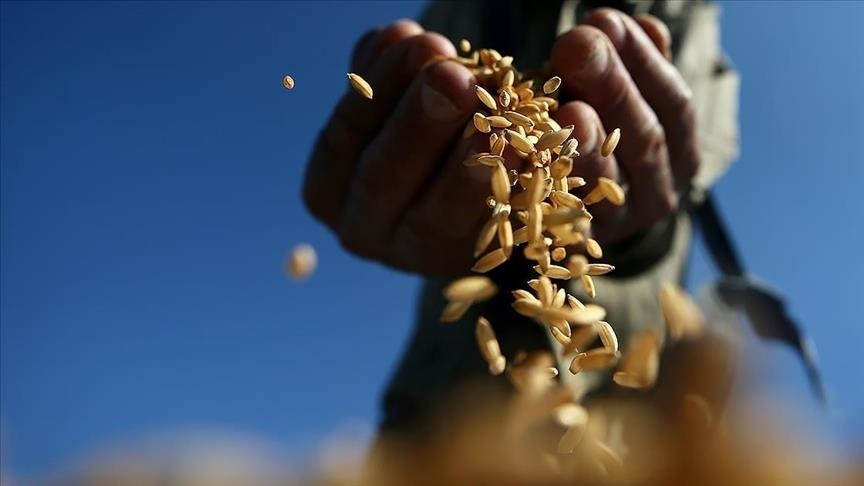

By Anadolu Agency
ISTANBUL
Global commodity market saw volatility last week amid uncertainties related to the Fed’s future monetary policies, as well as concerns about the Chinese economy and the possibility of a recession.
The Fed’s July minutes, released last week, pointed out that inflation was still well above the bank’s long-term target, which increased market volatility.
Analysts reported that the Fed is expected to leave the policy rate unchanged next month with a 90% probability and that uncertainties about the other two meetings scheduled until the end of the year remain high.
Amid these developments, selling pressure continued in the bond markets, while the US 30-year interest rate rose to 4.426%, the highest level since June 30, 2011, and the 10-year bond rate rose to 4.329%, the highest level since Nov. 8, 2007.
Analysts believe that high-interest rates and growing recession concerns around the world could bring US bonds to the forefront among investment instruments, noting that there has been an inflow of approximately $130 billion in bond funds this year.
Concerns about the Chinese economy have also contributed to ongoing selling pressure on the commodity market.
In the country, the producer price index (PPI) decreased by 0.3% and the consumer price index (CPI) fell by 4.4% last month; both are declining simultaneously for the first time since 2020, triggering deflation concerns.
While increasing risk perception in China has pushed the dollar/yuan parity to the peak level of about a year, the People’s Bank of China (PBoC) is expected to make the strongest intervention in its history through public banks to prevent yuan depreciation.
Analysts noted that with the data announced in China, both the decline in global demand and the country’s ongoing deflationary process increased concerns about economic activity.
Gold sees lowest weekly close in 5 months
Silver rose last week despite other precious metals continuing to fall.
Gold closed the week with a loss of 1.26%, platinum 0.33%, and palladium 3.04%, while silver rose 0.28%
Gold, which carried its downward trend to the fourth consecutive week, saw the lowest weekly closing in about five months.
As uncertainty about the Fed’s future monetary policy increased, according to analysts that global demand for the US dollar increased, causing gold prices to fall.
In the energy group, Brent oil per barrel price, which had been rising for seven weeks, ended the week down 2.1%, while natural gas lost 7.1%.
Base metals
Aluminum decreased by 2.1%, nickel by 0.4%and zinc by 5.4%.
Meanwhile, copper gained 0.1% and lead by 1.7%.
Concerns about economic activity in China, known as the world’s largest supplier country, caused pressure on base metals last week.
Agriculture group fluctuates sharply
In agricultural commodities, sharp fluctuations continued last week.
Wheat and rice fell 2.1% and 2.8%, while corn and soybeans gained 1.1% and 3.6%, respectively.
Cotton fell 4.9%, sugar 2.2%, and coffee 4.5%, while cocoa rose 2.5%.
Analysts stated that weekly wheat exports in the US decreased to 351,800 tons causing prices to fall.
The FAO’s wheat production forecasts, which increased by 6.6 million to 783.3 million tons compared to the previous month, and stock forecasts, which increased by 5.4 million to 313.9 million tons, were another factor in decreasing the commodity prices.
Analysts stated that increasing concerns about demand due to the slowdown in China’s economy put pressure on the cotton market, adding that according to the US Department of Agriculture production estimates, world cotton production was up by 1.03 million bales compared to the previous month to 116.72 million bales.
Expectations of excess production in the coffee market put downward pressure on prices.
The US Department of Agriculture estimates a surplus of eight million bags in the 2022/23 season.
Coffee production is projected to be 175 million bags, while consumption is expected to be 167 million bags.
According to data released by the International Coffee Organization (ICO), coffee exports so far in the season have reached 83 million bags, a 5.1% decrease from the same period last year.
We use cookies on our website to give you a better experience, improve performance, and for analytics. For more information, please see our Cookie Policy By clicking “Accept” you agree to our use of cookies.
Read More